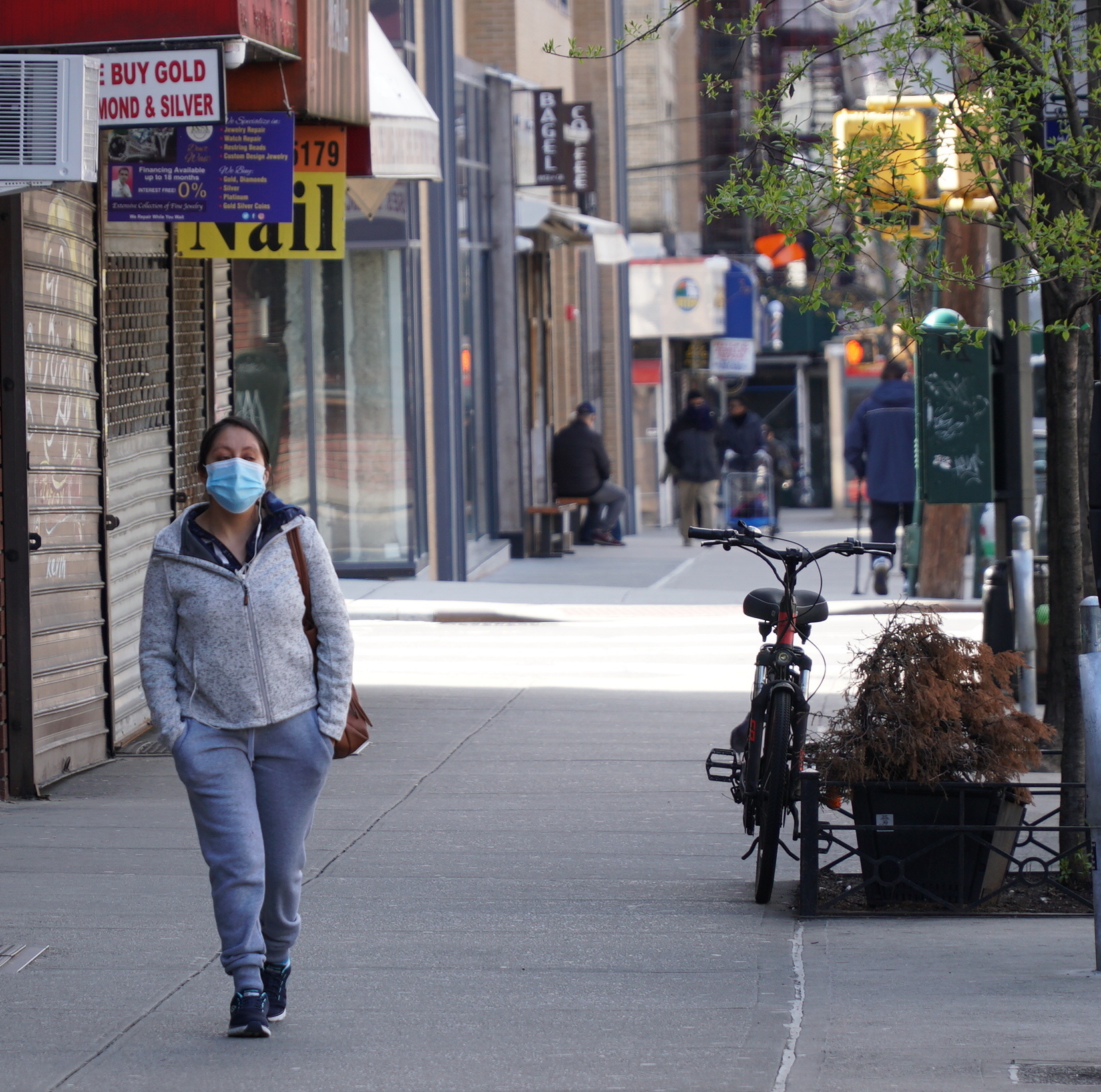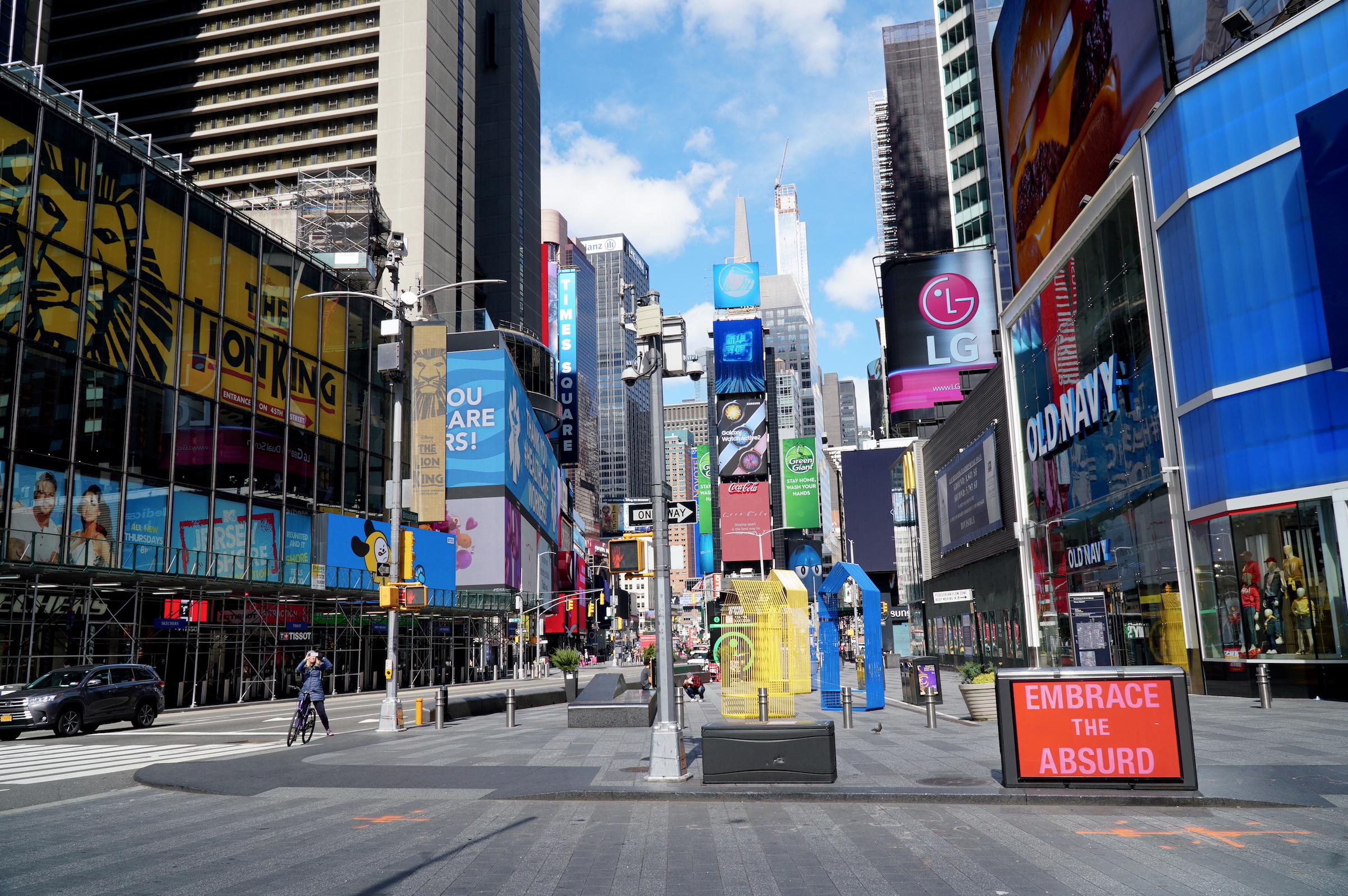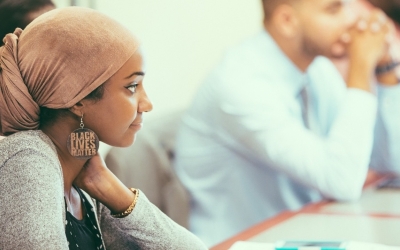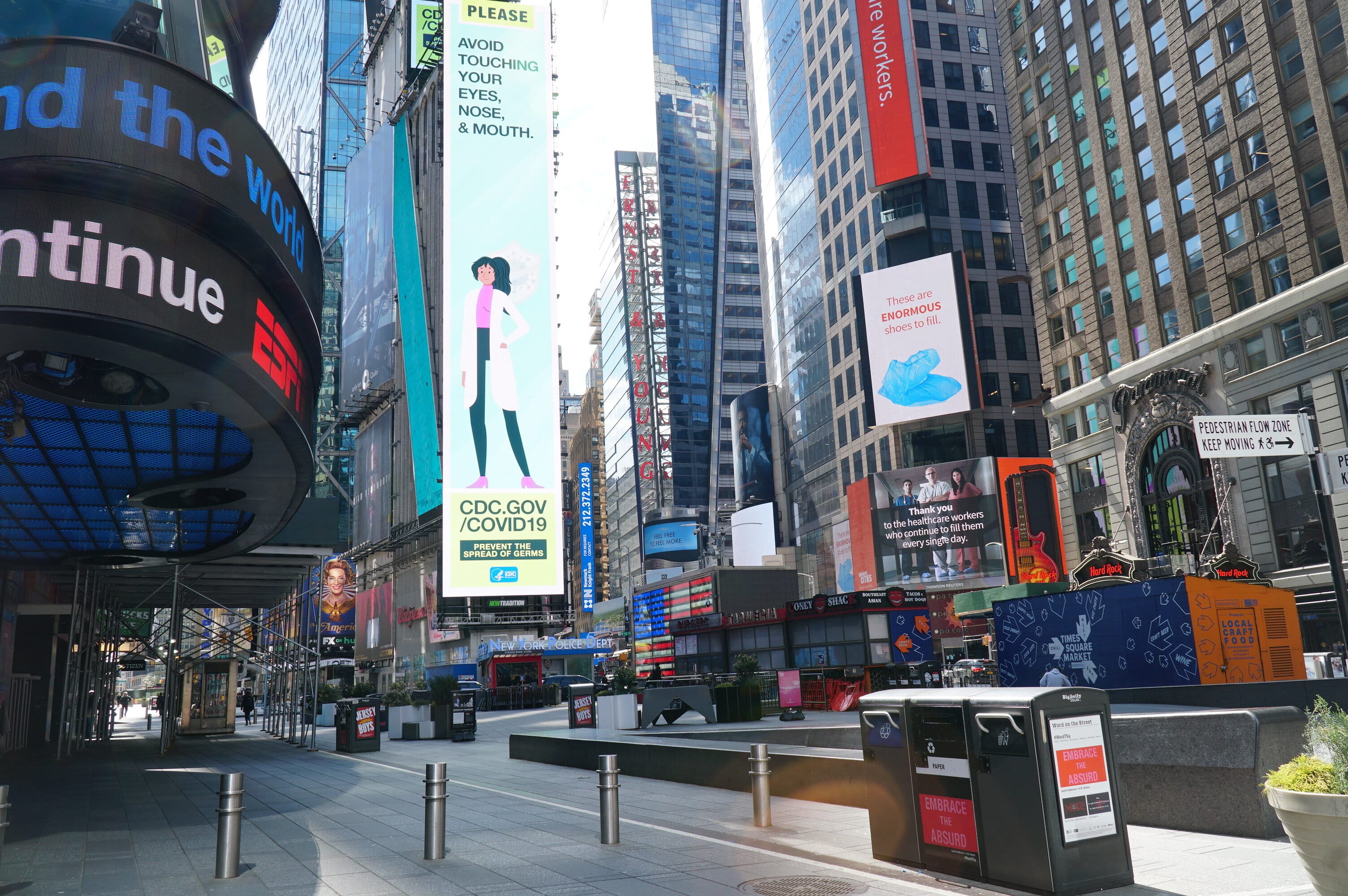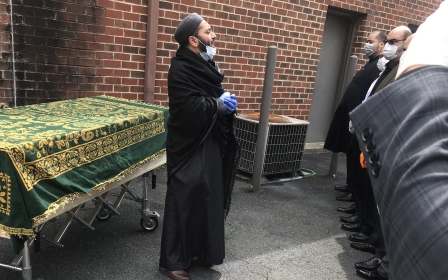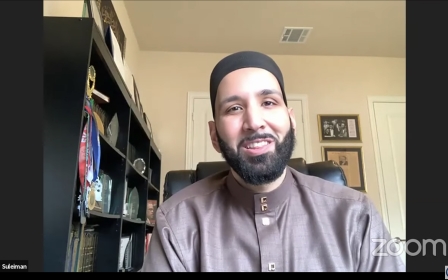'Fear is beginning to take over people's lives': Coronavirus in Queens
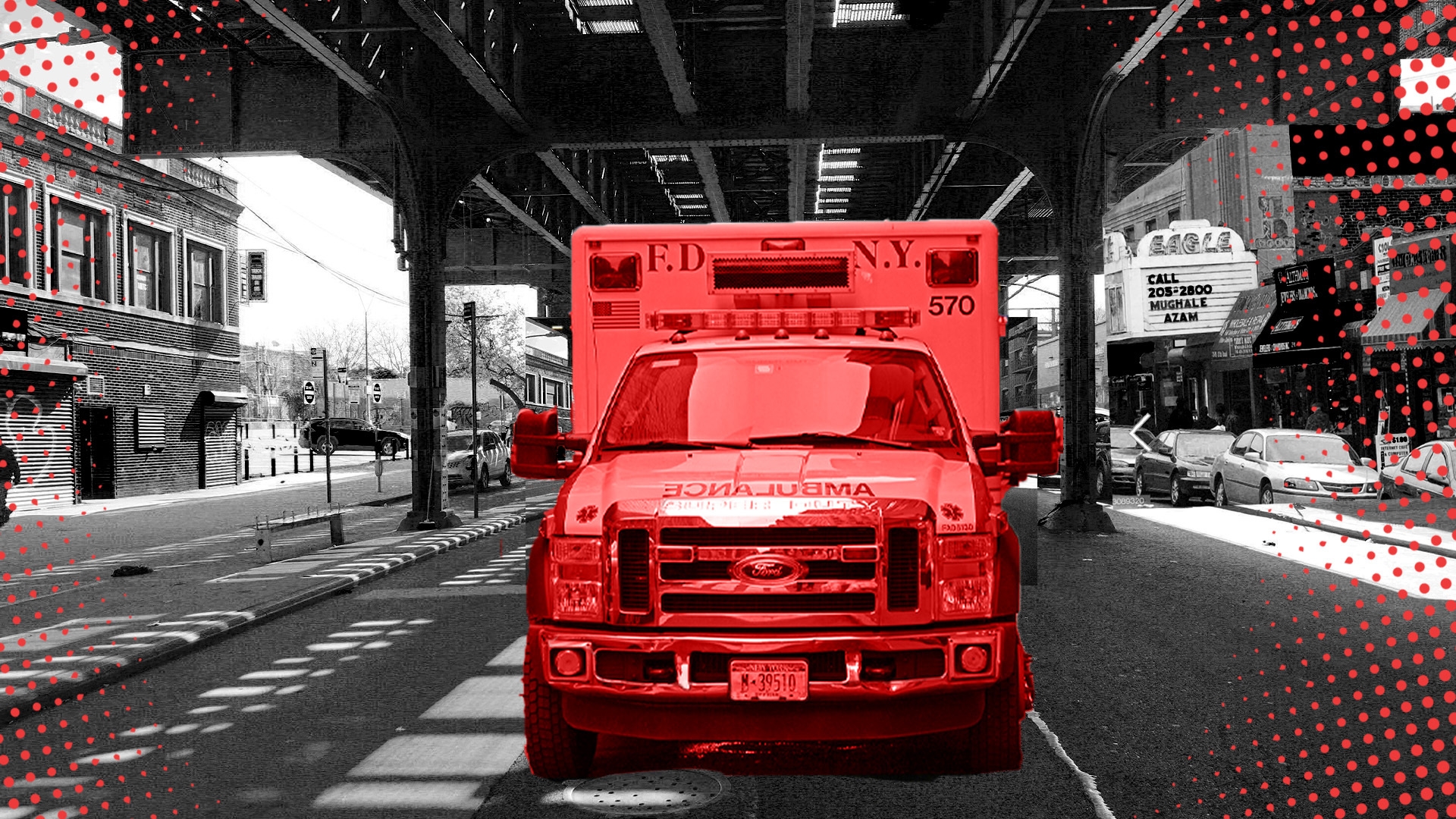
The sirens just don't seem to end.
In the northwestern neighbourhoods of Queens, the drone from ambulances racing to help sick coronavirus patients has become a daily score in people's lives.
"We are used to hearing ambulances, but now it's like every 10 minutes," said Shalini Kishan, a resident of Jackson Heights, an area in Queens that has become the "epicentre of the epicentre" of coronavirus cases in New York City.
"It's hard not to feel distressed by it. Each time they are taking someone, it's someone's parents or brother or sister being taken alone into a bare-boned hospital system."
"I have actually seen emergency staff wearing makeshift gear while taking them into the ambulance."
New MEE newsletter: Jerusalem Dispatch
Sign up to get the latest insights and analysis on Israel-Palestine, alongside Turkey Unpacked and other MEE newsletters
One third of all coronavirus infections in New York City are in the densely populated borough of more than a million people, mostly immigrants.
At the Elmhurst hospital, located less than a kilometre away from Kishan's apartment, emergency services are working at full capacity to treat patients struggling to breathe because of the virus.
As far back as late March, the 545-bed public hospital focused almost entirely on treating the pandemic. Some patients have reportedly died at the hospital waiting for beds. Outside the hospital, refrigerator trucks have been set up to store the dead.
"I don't know if it's just in my head, but sirens are getting louder. As if they are getting closer and closer," 30-year-old Kishan adds.
'Businesses are destroyed'
On Wednesday, New Yorkers woke up to news that a further 779 people had died overnight, taking the death toll across the US to 12,900.
The city also released a demographic breakdown of infections and fatalities, confirming what residents and organisers living in Queens had long suspected: The virus is disproportionately impacting people of colour and laying bare the fissures of an unequal city.
At least 70 percent of those who have died from the virus in NYC are people of colour.
'Many people are already feeling hopeless. How much more can we wash our hands, wear gloves, cover our faces, when the system is designed not to work and care for certain people?'
- Habiba Choudhury, organiser
In the usually thriving area of Manhattan, the sidewalks are empty. Time Square shimmers with abandonment. The high end designer stores on 5th Avenue are left to their mannequins.
The iconic New York Public Library, usually teeming with people inside and outside, a symbol of a city's prestige, stands like an abandoned castle. Bryant Park, at its rear, is now a temporary respite for the homeless sitting on discarded steel garden chairs.
With street traffic mostly at a halt, the street vendors and food carts that punctuate Manhattan street corners are nowhere to be found.
Mohamed Atta, the director of the Street Vendor Project, told MEE that more than 90 percent of vendors across the city had stopped working.
"They have no work, their businesses are destroyed and we are talking about thousands of people," Atta said.
Exposing the disparities
Whereas affluent white families in areas like Manhattan are able to exercise social distance, it is the poor and people of colour living in Queens, the Bronx and parts of Brooklyn who are least likely to be able to live six-feet-apart.
"I hope people realise that it's exposing the disparities. This is the heart of the immigrant New York where things are very different," says Habiba Choudhury, a longtime resident of Elmhurst and a community organiser.
Organisers say that asking people to practise social distancing and stay at home does not take into account that areas are significantly different.
Without other interventions, the 'one size fits all' directive is seeing devastating consequences in a borough like Queens.
"Queens is very dense. Many of our families are rent-burdened, which means we are paying 30 percent of the paycheck to rent. Many families live together in confined spaces," says Rana Abdelhamid, a 26-year-old community organiser in Queens.
"You have one essential worker coming back from work and then infecting 10 people living in the same space," Abdelhamid told MEE.
While doctors and nurses at hospitals are facing a shortage of protective equipment as they work on the front lines, the ‘invisible’ but essential labour working tills, packing shelves at warehouses or delivering products to homes, are individuals living in places like Queens.
For many, quitting a job at a time of mass unemployment and recession is not an option. But as workers who are the least protected, it also means they are potential vectors for transmission.
Diverse and dense
According to the Mayor's Office of Immigrant Affairs, almost 1.1 million of the more than 3.1 million immigrants in NYC, live in Queens.
The diverse borough represents both a home and a gateway for millions of new immigrants into the city. One in five people living in Corona and Elmhurst already live in poverty, making Queens a timebomb.
"Almost everyone in Queens knows someone who has passed away from the virus; almost everyone I know, knows someone who has the virus.
"Everyone in Queens has an essential worker in their family,” Abdelhamid says. “It’s all very close to home."
Choudhury says that her family knows about 10 people who have died from the virus.
"My dad's best friend was one of them. It has been a very painful time for us," the 26-year-old told MEE.
"I look around at the small businesses that have closed. All of these people have bills and rent and debt. What are they going to do now?"
Though the virus has not spared A-list celebrities or politicians, residents and community organisers are disputing claims that the pandemic is a grand leveler or equaliser.
Kishan says that Elmhurst and Jackson Heights might be hit hard, but other neighbourhoods like Jamaica, where predominantly Black people live, is still receiving scant attention. Black Muslims have already sounded the alarm over the neglect faced by their community.
The system doesn't care for everyone
The health crisis in Queens has also been exacerbated by the fact that many workers, now deemed as 'essential' during the crisis, do not ordinarily have proper access to health care, leaving many of their underlying health issues unattended.
Then it is a matter of access and resources. There are three times as many beds per 1,000 people in Manhattan than in Queens.
One emergency medicine doctor at Elmhurst Hospital Center wrote on Sunday that "even during normal times, patients at Elmhurst Hospital experience long waits for mundane medical concerns… so it is wholly unsurprising that this hospital would be overwhelmed now by an enormous surge of patients".
Though Governor Andrew Cuomo has acknowledged that poor and working-class people are mostly impacted, and also agreed to release data detailing the specific demographic groups hit by the virus, it is not clear what specific measures are being taken to contain Covid-19 in places where it is spreading at a faster rate.
Cuomo's office did not respond to MEE's request for comment.
Organisations like Desis Rising Up and Moving (DRUM), a social justice group dedicated to the South Asian and Caribbean community, have been urging the government to cancel rent - not only to help those who have lost their livelihoods but to account for the pre-existing structural shortfalls of the health and economic system.
Multiple surveys have found that at least 40 percent of New Yorkers wouldn't be able to afford their rent in April.
Choudhury says without urgent and imaginative intervention, the anxiety will soon turn to widespread hopelessness.
"Many people are already feeling hopeless. How much more can we wash our hands, wear gloves, cover our faces, when the system is designed not to work and care for certain people?”
"The solution is a rent freeze so that they can stay inside. If they have to go to work, then give them the guarantee of health care or the right equipment, so they aren’t risking their lives every day."
Middle East Eye delivers independent and unrivalled coverage and analysis of the Middle East, North Africa and beyond. To learn more about republishing this content and the associated fees, please fill out this form. More about MEE can be found here.


